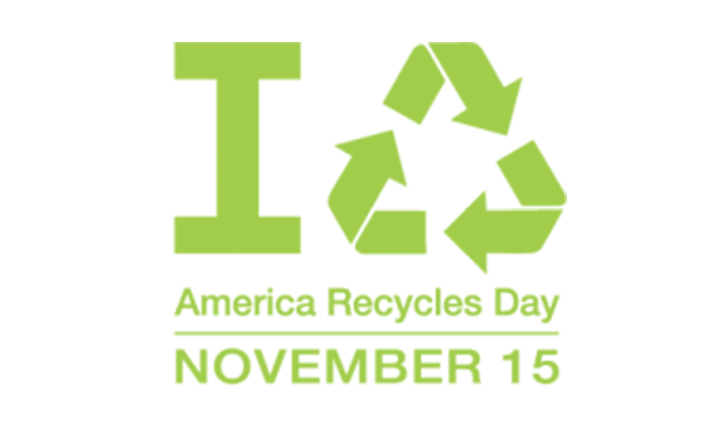
Recycling is one of the primary — and easiest — ways we can support our mission to be intolerant of waste. Each American produces about 4.4 pounds of trash each day. That adds up to 254 million tons of trash annually. A lot of it can be recycled. Or even better — upcycled!
Upcycling is a way of reusing discarded objects or materials to create something of higher quality or value than the original. For instance, you can make an upcycled coffee table from an old drawer. Or turn an old birdcage into a lovely planter. See more examples like this at upcyclethat.com.
Before you toss that glass jar or plastic bag in the trash, consider the fact that recycling one glass bottle saves enough energy to power a computer for 30 minutes or a TV for 20 minutes. And that more than 15,000 locations, including Publix, can take your plastic bags to be recycled. But you can have an even bigger impact by swapping your plastic bags for reusable bags if you haven’t already.
As we celebrate America Recycles Day Nov. 15, know recycling is important because it
- conserves natural resources, preserving the environment for future generations
- reduces need for landfills and incinerators
- prevents pollution and reduces greenhouse gas emissions and
- saves energy by eliminating the need to extract and process raw materials.
How Publix recycles
“From stores and manufacturing plants to distribution facilities and support offices, all areas of the company are involved in recycling,” said Recycle & Solid Waste Manager Kim Brunson. “You probably know that Publix recycles cardboard, paper and plastic bags. But did you know we also recycle floral buckets, truck seals, sani-wipe containers and other hard plastics, as well as food scraps? Even watermelon rinds are diverted from many stores and used for animal feed or compost.”
Spread the message
Publix encourages all associates to take part in their local curbside recycling. Become a campaign advocate! Help spread the message that recycling — and upcycling — can give your garbage another life by visiting www.americarecyclesday.org for promotional materials and tips.
Online Exclusive
Recycling through the ages
Most of us think of recycling as a 20th century innovation. But it has actually been around much longer, even if you don’t count dinosaurs as the first recycled materials. Below are just a few significant recycling milestones.
- 500 B.C.: Athens organizes the first municipal dump program in the western world. By law, waste had to be disposed of at least 1 mile from the city walls.
- 1031: The first ever recorded reuse of waste paper occurs in Japan. It is often used for paintings and poetry.
- 1690: Recycled manufacturing process starts in Philadelphia, using fibers from recycled cotton and linen rags to make paper.
- 1904: In America, the first aluminum can recycling plants open in Chicago and Cleveland.
- 1941: After Pearl Harbor, Americans salvage and reuse materials to support the war effort.
- 1965: The Mobius Loop debuts as the symbol for Reduce, Reuse, Recycle.
- 1972: Developers build the first recycling mill in Pennsylvania.
- 1974: University City, Missouri, becomes one of the first municipalities to offer curbside recycling.
- 1981: Woodbury, New Jersey, becomes the first city to mandate recycling.
- 1995: More than 10,000 recycling centers exist nationwide and more than 4,000 curbside collection programs.
- 2006: E-waste recycling begins when Dell Computer offers free recycling service for electronics.
- 2014: IBM researchers discover new polymers that could revolutionize technology. The materials are strong, light and can self-heal — scientists believe this could be the answer to drastically reducing waste.
For more on the history of recycling, visit all-recycling-facts.com.
Recycling myth busters
The recycling process has changed over the years, but many of us aren’t aware of the improvements that actually make it easier than ever for us to recycle. Here are some common myths that stop us from doing our part.
| Myth | Fact | |
| You can include plastic bags in curbside recycling. | Plastic bags tear up the machinery used to sort curbside recycling items. Take your plastic bags back to Publix. | |
| You need to remove labels before recycling glass or steel containers. | You don’t need to remove the labels from glass bottles or steel cans because the heat generated in the manufacturing process removes them for you. | |
| You must bag grass clippings and dispose of them in a compost when mowing your lawn. | It’s better to mow your lawn so that grass clippings are never more than two to three inches tall. Leave the clippings where they fall to decompose. | |
| You must rinse out and remove the cap from plastic containers. | Plastics are cleaned at the recycling facility, but use every drop you can from the container to reduce waste. Recyclers want the caps and lids, so crush the container and put the cap on it before tossing in the recycling bin. | |
| You have to remove staples, labels and stickers from mail and papers. | Don’t worry about removing these; they’re removed during the recycling process. | |
| It’s okay to dispose of electronics and household hazardous waste in the trash. | EPA has specific regulations about disposal of these materials and recommends contacting your local city or county agency for instructions and drop-off locations. | |
| Compost piles are smelly, attract pests and rodents and take a long time to become usable. | A properly managed compost pile will not attract pests and rodents and takes as little as six to eight weeks to become usable. |


